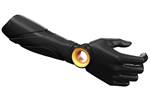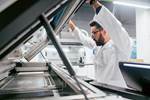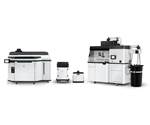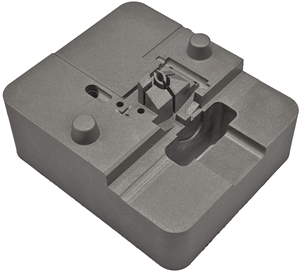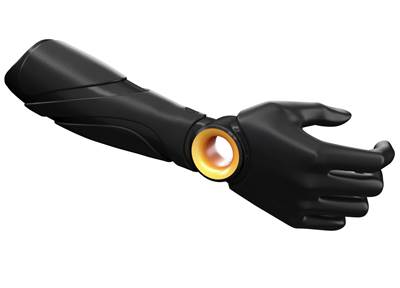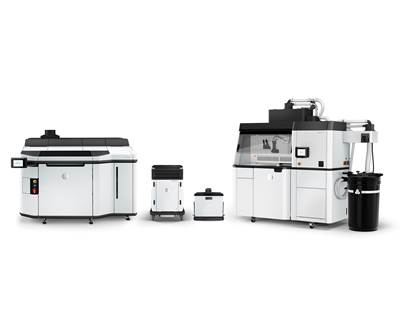Captive Molder Goes AM Route for Short-Run Project
Pivoting from injection molding to additive manufacturing helped a maker of automotive wire routers save about $1 million in project costs and eight weeks of lead time.
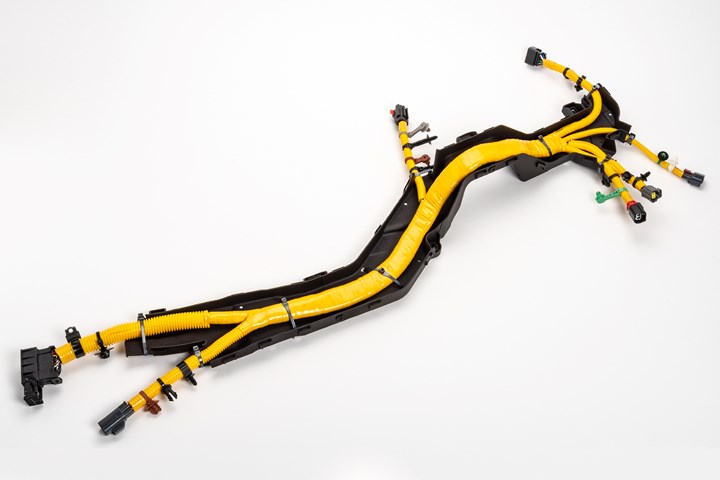
Fast Radius’ 3D printing capabilities help produce a series of wire-routing aids for a new prototype vehicle for a customer of HellermannTyton. (Photo: Fast Radius)
When HellermannTyton had about six weeks to produce more than 1000 wire-routing mounts for an automotive application, it turned to additive manufacturing (AM)—commonly referred to as 3D printing—to get the customer the parts it needed when it needed them.
With a U.S. office in Milwaukee, HellermannTyton (hellermantyton.us) designs and manufactures products used to guide wires throughout the interior of vehicles, ensuring cables are safely secured. Typically, these are injection molded in-house by HellermannTyton, but the company ruled out molding here because of the tooling costs involved for such a short run. Instead, it turned to Fast Radius, which has served the automotive industry for many years.
Notes Ethan Fish, project designer at HellermannTyton, “Traditional manufacturing methods like injection molding or CNC machining would have been costly and time-intensive, so we turned to Fast Radius for a better method,” Fish says. “Fast Radius’ platform helped us quickly evaluate designs and produce high-quality, industrial-grade parts with additive manufacturing, which saved us two months in development time and allowed us to ramp up to full production quickly.”
Kyle Huettl, HellermannTyton product manager, says that while AM parts may look more expensive, they are actually cheaper for a project like this. “When customers started to look at that and we started to show them the price differences and the speed and the time that it takes to do this, they were much more open to hearing about it,” he notes.
John Nanry, co-founder and chief manufacturing officer for Fast Radius (fastradius.com), says the company’s Cloud Manufacturing platform integrates design, production and fulfillment operations through a common digital infrastructure. The goal is to make manufacturing easier, more accessible and more sustainable.
“The automotive industry—when you talk about quality and volume requirements—is one of the toughest industries to work with, so we got really excited about taking on that challenge,” Nanry notes.
The combination of short lead times, low-volume runs, and complex assembly made additive manufacturing the right choice for production. However, it was important that the technology used to manufacture the routing aids had the right build capacity and materials to meet HellermannTyton’s quality requirements.
Fast Radius had the production capacity through both its own fleet of HP Multi-Jet Fusion machines and its network of partners to meet the project’s fast timelines. The parts were printed on HP MJF machines using nylon 12. Due to the large size and complexity of these parts, HellermannTyton needed to modify the designs by splitting them into two to four smaller sections that could be produced within the machine’s build volume.
Each routing aid is custom-built to match the internal framework of the vehicle. The components have complex geometries that require assembly to the wiring harness. HellermannTyton worked with Fast Radius to print sections with mating geometry that when used in combination with adhesive creates a reliable finished product. Fast Radius’ technical team worked closely with HellermannTyton on the post-processing requirements, which included part dyeing, assembly, and specialized shipping. HellermannTyton saved time and costs by using Fast Radius as a one-stop shop for all of their AM needs.
The pivot from traditional manufacturing processes to additive manufacturing enabled HellermannTyton to save approximately $1 million in project costs and eight weeks of lead time.
Related Content
The Connector Conundrum: 3D Printed Mold Tooling’s Role in Innovation
ReelView Fishing faced an electronics obstacle in the development of its new technology for underwater video. Additive manufacturing for moldmaking allowed for the speed necessary to iterate to a solution. How inventors and invention will benefit from new ways of obtaining production-ready tooling.
Read More420 Stainless Steel Now Qualified With TrueShape 3D Printing Technology
NPE2024: Mantle's additive manufacturing technology is designed for precision tooling.
Read MoreNPE 2024: Additive Manufacturing Assisting, Advancing Plastics Processing
Exhibitors and presenters at the plastics show emphasized 3D printing as a complement and aid to more traditional production processes.
Read MoreProduction Tool, Prototype Time
Mantle's metal 3D printing technology targeted toolmaking and injection molders and moldmakers are taking notice.
Read MoreRead Next
3D Printing Enables Customizable Medical Prosthetics
Glaze Prosthetics produces customized prosthetics using HP’s Multi Jet Fusion technology.
Read MorePredictions for the 3D Printing and Recycling Sectors in 2022
A look at what to expect in 2022 for both 3D printing and recycling.
Read MoreHP Enlarges Its 3D Printing Footprint with Four Major Announcements
A more efficient Jet Fusion printer for volume production; a new elastomeric TPU powder; a 3D printing manufacturing network of qualified production shops; and deeper integration with Siemens’ digital manufacturing software.
Read More

